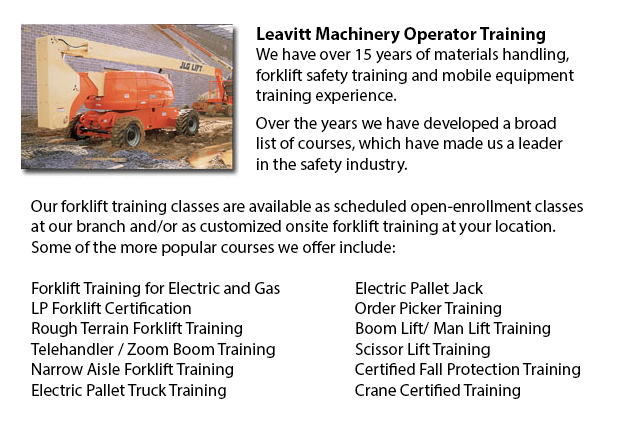
Aerial Boom Lift Ticket Burlington - Aerial lifts can be used to accomplish numerous distinctive tasks executed in hard to reach aerial places. A few of the odd jobs associated with this type of jack include performing routine upkeep on buildings with lofty ceilings, repairing telephone and utility lines, lifting burdensome shelving units, and trimming tree branches. A ladder might also be used for many of the aforementioned jobs, although aerial platform lifts provide more security and strength when correctly used.
There are a number of distinctive designs of aerial forklifts existing, each being able to perform slightly unique tasks. Painters will usually use a scissor lift platform, which can be utilized to get in touch with the 2nd story of buildings. The scissor aerial jacks use criss-cross braces to stretch out and extend upwards. There is a table attached to the top of the braces that rises simultaneously as the criss-cross braces lift.
Container trucks and cherry pickers are another type of aerial hoist. They contain a bucket platform on top of a long arm. As this arm unfolds, the attached platform rises. Platform lifts utilize a pronged arm that rises upwards as the lever is moved. Boom lifts have a hydraulic arm which extends outward and hoists the platform. All of these aerial lifts require special training to operate.
Training courses presented through Occupational Safety & Health Association, known also as OSHA, embrace safety strategies, machine operation, maintenance and inspection and machine load capacities. Successful completion of these education programs earns a special certified license. Only properly qualified individuals who have OSHA operating licenses should run aerial lift trucks. The Occupational Safety & Health Organization has developed rules to uphold safety and prevent injury when utilizing aerial lifts. Common sense rules such as not using this apparatus to give rides and making sure all tires on aerial lift trucks are braced in order to prevent machine tipping are noted within the guidelines.
Unfortunately, statistics show that in excess of 20 operators pass away each year while operating aerial hoists and 8% of those are commercial painters. Most of these incidents are due to inappropriate tire bracing and the lift falling over; for that reason a lot of of these deaths had been preventable. Operators should make certain that all wheels are locked and braces as a critical safety precaution to prevent the instrument from toppling over.
Additional rules involve marking the surrounding area of the machine in an obvious way to safeguard passers-by and to ensure they do not approach too close to the operating machine. It is crucial to ensure that there are also 10 feet of clearance among any utility cables and the aerial lift. Operators of this apparatus are also highly recommended to always have on the proper security harness while up in the air.
-
Order Picker Training Burlington
Order Picker Training Burlington - Order picker's enables warehouse employees to lift pallets using forks. Also called a stock picker, this particular electrically-powered equipment is similar to a forklift except that an order picker is likewise uti... More -
Crane Certification Burlington
Crane Certification Burlington - The Crane Certification training program includes content recommended by industry regarding the efficient and safe operation of cranes. Trainees would learn the following: how to identify cranes and their component pa... More -
Overhead Crane Training Burlington
Overhead Crane Training Burlington - The overhead crane is a piece of equipment which can lift and move huge, heavy objects which can't be handled by hands. Typically, overhead cranes are fixed in place. These equipment are capable of moving huge vol... More -
Aerial Lift / Boom Lift / Man Lift / Scissor Lift Training in Burlington
Lift tables or scissor lifts could elevate both people and goods vertically. They are normally used in construction, commercial and industrial environments. Commonly, the use of a scissor lift is to lift and lower supplies from one floor of a job loc... More -
Telehandler Operator Training Burlington
Telehandler Operator Training Burlington - Telescopic Handler forklifts or telehandler forklifts are usually found on construction places and their popularity continues to rise. The versatility of telehandler forklifts ensures that they are a valuabl... More -
Forklift Training Classes Burlington
Forklift Training Classes Burlington - Forklift are heavy pieces of industrial machines that are made use of in transporting and the handling of merchandise and materials. They are often known as Lift trucks and are found in all sorts of businesses.... More -
Boom Lift Training Burlington
Boom Lift Training Burlington - Aerial platforms or also known as elevated work platforms are devices that allow workers to perform tasks and duties at elevated heights that would not be otherwise accessible. There are a variety of aerial lifts avail... More -
Bucket Truck Training Burlington
Bucket Truck Training Burlington - The Vehicle-Mounted Aerial Work Platform or also called bucket truck training program is intended to decrease the risk of incident and personal injury while working in close proximity or with bucket trucks by effici... More

Forklift Training Burlington
TOLL FREE: 1-888-254-6157
Burlington, Ontario
forklifttrainingburlington.com
Email Us
About Us


